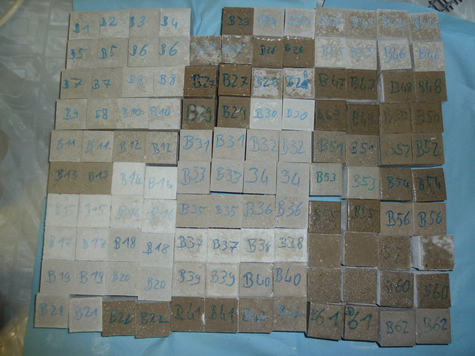CO2-reduced concrete binders
Problem
Concrete is currently the most important artificial building material. But modern concrete harbours major problems that have increasingly made the headlines in recent years:
- The production of concrete requires large quantities of river sand and gravel. Both will no longer be available in unlimited quantities in the future.
- Concrete has an extremely poor ecological balance. In its production, Portland cement is used as a binding agent for this river sand and gravel in combination with water. For every tonne of cement needed, about 0.8 tonnes of CO2 are released. Because of the huge quantities of cement consumed worldwide (about four billion tonnes in 2016), the cement industry is responsible for five to eight percent of anthropogenic carbon dioxide emissions. By comparison, all air travel in 2018 resulted in CO2 emissions of about 700 million tonnes. Emissions from the cement industry were well over two billion tonnes of CO2 in the same period.
- The increasing taxation of CO2 will make cement and thus concrete much more expensive in the future.
- Concrete is only stable up to temperatures of around 500 degrees Celsius.
Solution
Against this background, the need to look at new, CO2-reduced binders is almost inevitable.
The performance of the Institute NaSiO

The employees at the NaSiO Institute have developed a new type of binder that can be mixed and processed with sand like conventional concrete. It hardens at room temperature within a few hours and can be stripped after 24 hours. Its compressive strength can be adjusted by the aggregate content in a range between 10 and 120. It is stable to heat loads of more than 1500 degrees Celsius.